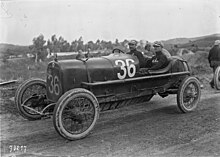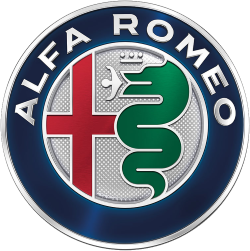
Alfa Romeo Automobiles S.p.A. is an Italian carmaker known for its sports-oriented vehicles, strong auto racing heritage, and iconic design. Headquartered in Turin, Italy, it is a subsidiary of Stellantis Europe and one of 14 brands of multinational automotive company Stellantis.

Tazio Giorgio Nuvolari was an Italian racing driver. He first raced motorcycles and then concentrated on sports cars and Grand Prix racing. Originally of Mantua, he was nicknamed il Mantovano Volante and Nuvola ("Cloud"). His victories—72 major races, 150 in all—included 24 Grands Prix, five Coppa Cianos, two Mille Miglias, two Targa Florios, two RAC Tourist Trophies, a Le Mans 24-hour race, and a European Championship in Grand Prix racing. Ferdinand Porsche called him "the greatest driver of the past, the present, and the future".

Enzo Anselmo Giuseppe Maria Ferrari was an Italian motor racing driver and entrepreneur, the founder of the Scuderia Ferrari Grand Prix motor racing team, and subsequently of the Ferrari automobile marque. Under his leadership, Scuderia Ferrari won nine drivers' world championships and eight constructors' world championships in Formula 1 during his lifetime.

Scuderia Ferrari, currently racing under Scuderia Ferrari HP, is the racing division of luxury Italian auto manufacturer Ferrari and the racing team that competes in Formula One racing. The team is also known by the nickname "The Prancing Horse", in reference to their logo. It is the oldest surviving and most successful Formula One team, having competed in every world championship since 1950.

Achille Varzi was an Italian racing driver. He is remembered as the chief rival of Tazio Nuvolari, and was the winner of the 1933 Monaco Grand Prix.
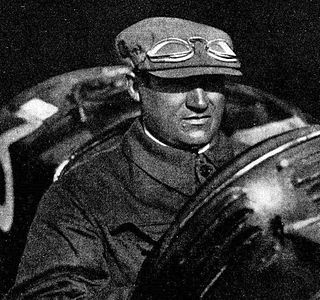
Antonio Ascari was an Italian Grand Prix motor racing champion. He won four Grands Prix before his premature death at the 1925 French Grand Prix. He was the father of two-time World Champion Alberto Ascari.

Nino Vaccarella was an Italian sports car racing and Formula One driver.
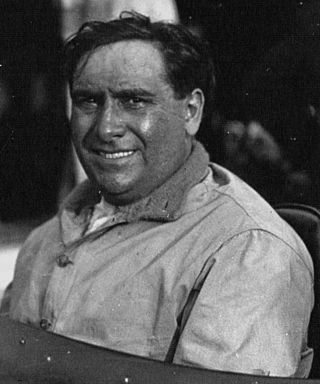
Giuseppe Campari was an Italian opera singer and Grand Prix motor racing driver.

Baconin Borzacchini was an Italian racing driver who often competed under the nom de courseMario Umberto Borzacchini.

During its history, Alfa Romeo has competed successfully in many different categories of motorsport, including Grand Prix motor racing, Formula One, sportscar racing, touring car racing and rallies. They have competed both as a constructor and an engine supplier, via works entries and private entries. The first racing car was made in 1913, three years after the foundation of A.L.F.A., the 40/60 HP had 6-litre straight-4 engine. Alfa Romeo quickly gained a good name in motorsport and gave a sporty image to the whole marque.

The Alfa Romeo P2 won the inaugural Automobile World Championship in 1925, taking victory in two of the four championship rounds when Antonio Ascari drove it in the European Grand Prix at Spa and Gastone Brilli-Peri won the Italian Grand Prix at Monza after Ascari died while leading the intervening race at Montlhery.

The Alfa Romeo RL was produced between 1922 and 1927. It was Alfa's first sport model after World War I, designed in 1921 by Giuseppe Merosi. It had a straight-6 engine with overhead valves, and came in three different versions: Normale, Turismo and Sport. A total of 2,640 RLs were made.
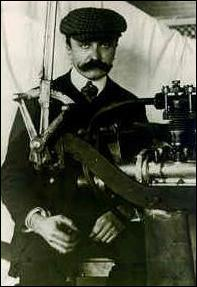
Giuseppe Merosi was an Italian automobile engineer and designer.
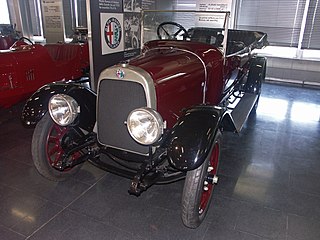
ALFA or later Alfa Romeo has made three cars named as 20/30 HP, first one 1910 4-cylinder 4-6-seater tourer, improved version 20/30 HP E in 1914 and 1921 the 20/30 HP ES Sport, a 4-seater sportscar.
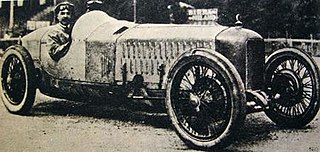
Alfa Romeo P1 or Alfa Romeo Tipo P1 was the first Grand Prix car made by Alfa Romeo in 1923. The car had a 2.0 L straight-6 engine and it produced 95 bhp (71 kW) at 5000 rpms. The bore and stroke were 65mm and 100mm, respectively. Three cars were entered in the Italian GP at Monza in 1923, for Antonio Ascari, Giuseppe Campari and Ugo Sivocci. When Sivocci was practicing for the GP in September 1923 he crashed and was killed. Alfa Romeo withdrew from the competition and development of the car was stopped. In 1924 a new version with Roots-compressor was made and became the P1 Compressore 1924.

The 1921 Grand Prix season saw motor racing in Europe blossom again. The French Grand Prix was held for the first time since 1914, at La Sarthe, Le Mans. and the inaugural Italian Grand Prix was held in Montichiari, near Brescia. The 3-litre formula of the AIACR, already in use at Indianapolis, was adopted by those Grand Prix meaning manufacturers could design on a common formula.

The 1923 Grand Prix season was part of a watershed year for motor racing that saw significant advances in motor-racing engineering, design and events. Fiat's chief designer, Guido Fornaca, developed the 805, the first supercharged car to win a Grand Prix. Benz appeared with the first mid-engined racer and, along with Bugatti and Voisin, produced some of the first efforts at aerodynamics on racing cars. With the United States also adopting the 2-litre formula, Harry Miller could use the smaller engine size to design the first single-seater race-car, ideally suited to American oval racing.

The 1924 Grand Prix season saw Grand Prix motor racing spread further across Europe and North America. In Italy a number of new open-road events were held. In France two new circuits were opened – at Montlhéry near Paris and Miramas near Marseille.
The 1919 Grand Prix season was the first season following the armistice that ended World War I in November 1918. European economies were struggling, and many automotive firms had to recover and retool from military production. So, there was very little racing activity as it took time for the companies and populations to recover. As the world rebuilt there were only two major races held in the year – the Indianapolis 500 and the Targa Florio.

The Quadrifoglio is the brand used by the Italian auto manufacturer Alfa Romeo to indicate a high performance model. The Quadrifoglio is usually placed on the side panels of the car, above or behind the front wheels—on the front wings in the case of modern vehicles. The logo consists of a green four-leaf clover contained in a triangle.
